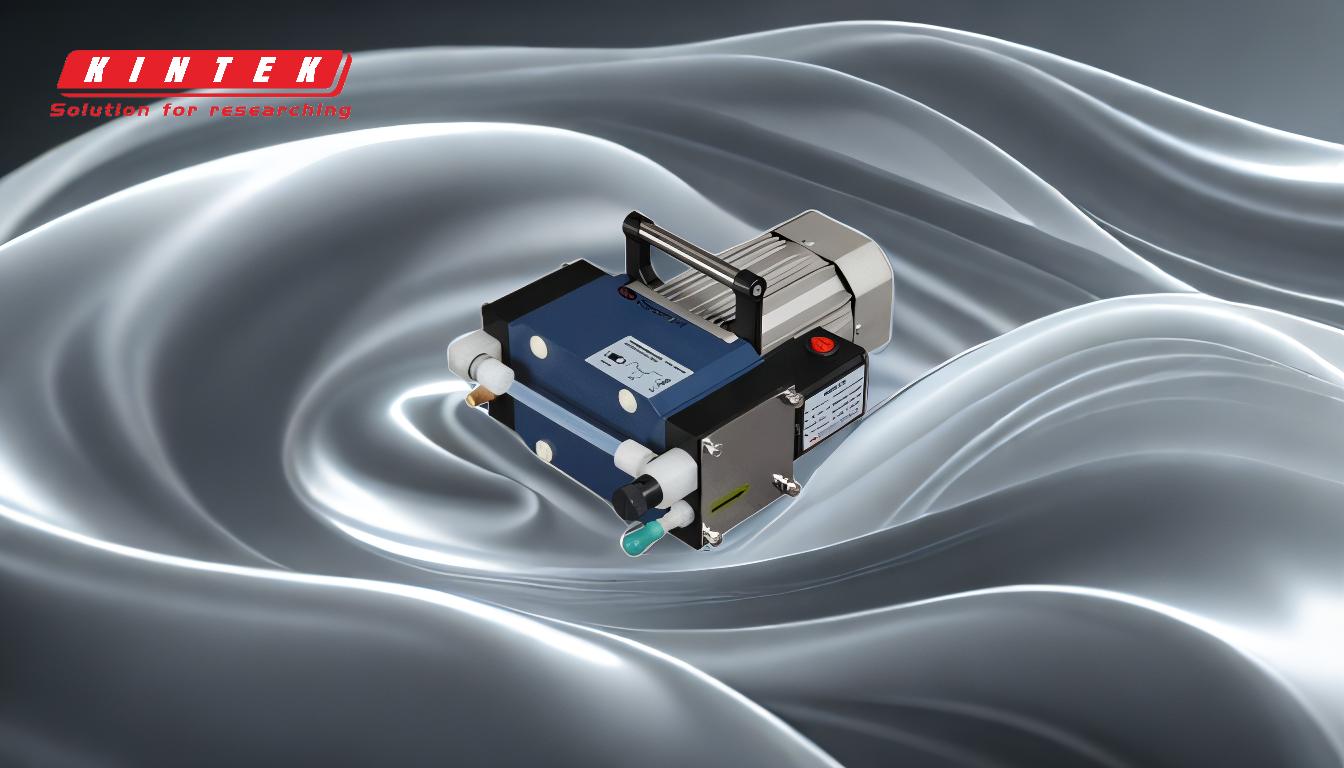The performance of a vacuum pump depends on a variety of factors, including the type of pump, the gas being pumped, and the specific application requirements. Key considerations include the pumping speed, maximum vacuum level, flow rate, chemical compatibility, and operational conditions such as motor speed, horsepower, and noise level. Additionally, factors like the internal volume of the vacuum vessel, the time required to achieve the desired pressure, and the gas load play a significant role in determining the pump's efficiency. Selecting the right pump involves balancing these factors to ensure reliable functionality and cost-effectiveness for the intended use.
Key Points Explained:

-
Type of Pump:
- Different vacuum pumps (e.g., momentum transfer, entrapment, oil-free, oil-sealed) are designed for specific applications and gases. The choice of pump directly impacts its performance, as certain pumps are more effective for particular gases or processes.
-
Gas Composition:
- The chemical composition of the gas being pumped affects the pumping rate and efficiency. For example, some pumps are optimized for handling specific gases, while others may struggle with certain chemical compositions.
-
Pumping Speed and Flow Rate:
- The pumping speed (volume of gas removed per unit time) and flow rate are critical for achieving the desired vacuum level within a specified timeframe. These factors depend on the pump's design and operational parameters.
-
Maximum Vacuum Level:
- The maximum vacuum level a pump can achieve is a key performance metric. It determines the pump's suitability for high-vacuum or ultra-high-vacuum applications.
-
Operational Parameters:
- Motor speed, horsepower, noise level, and hose barb size influence the pump's performance and suitability for specific environments. For example, a high-horsepower motor may be necessary for heavy-duty applications, while low noise levels are essential for laboratory settings.
-
Chemical Compatibility:
- The pump's materials must be compatible with the gases being pumped to avoid corrosion or contamination. This is particularly important in chemical or pharmaceutical applications.
-
Maintenance and Cost:
- Maintenance requirements and cost-effectiveness are important considerations. Oil-free pumps, for instance, may have lower maintenance needs but could be more expensive upfront.
-
Application-Specific Requirements:
- Factors such as the internal volume of the vacuum vessel, the time required to achieve the desired pressure, and the gas load must align with the pump's capabilities. Operational and process issues also play a role in determining the appropriate system.
-
Environmental and Location Factors:
- The location of the system and environmental conditions (e.g., temperature, humidity) can affect the pump's performance and longevity.
-
Quality and Reliability:
- High-quality, reliable pumps with a proven performance portfolio are essential for critical applications. This ensures consistent operation and minimizes downtime.
By carefully evaluating these factors, you can select a vacuum pump that meets your specific needs, ensuring optimal performance and cost-effectiveness.
Summary Table:
| Factor | Description |
|---|---|
| Type of Pump | Choose between momentum transfer, entrapment, oil-free, or oil-sealed pumps. |
| Gas Composition | Pumping efficiency depends on the chemical properties of the gas. |
| Pumping Speed & Flow Rate | Critical for achieving desired vacuum levels within a specific timeframe. |
| Maximum Vacuum Level | Determines suitability for high-vacuum or ultra-high-vacuum applications. |
| Operational Parameters | Includes motor speed, horsepower, noise level, and hose barb size. |
| Chemical Compatibility | Materials must resist corrosion or contamination from pumped gases. |
| Maintenance & Cost | Balance maintenance needs and upfront costs for long-term cost-effectiveness. |
| Application Requirements | Align pump capabilities with internal volume, gas load, and pressure needs. |
| Environmental Factors | Consider temperature, humidity, and system location for optimal performance. |
| Quality & Reliability | High-quality, proven pumps ensure consistent operation and minimize downtime. |
Need help selecting the right vacuum pump? Contact our experts today for tailored solutions!








